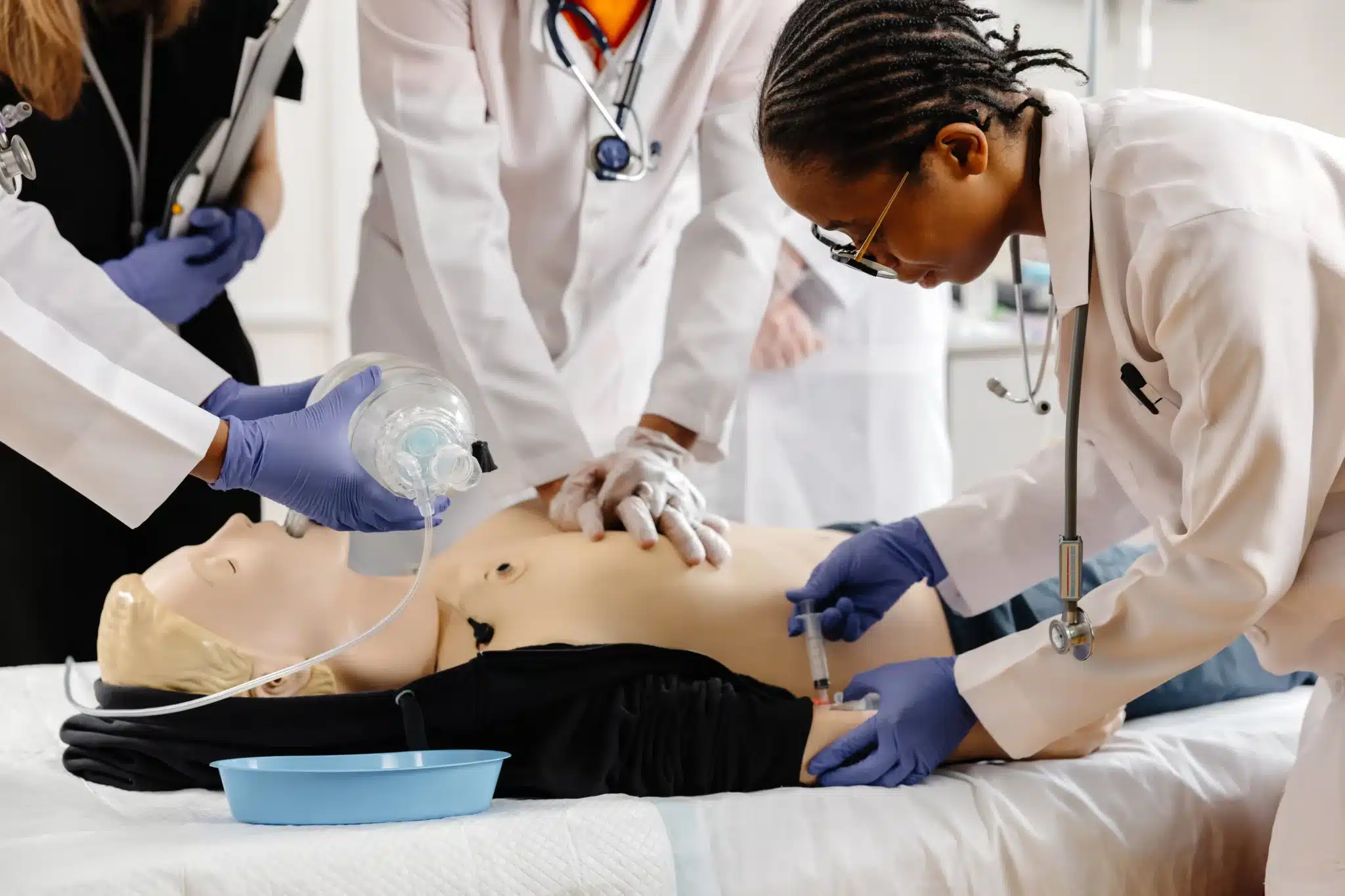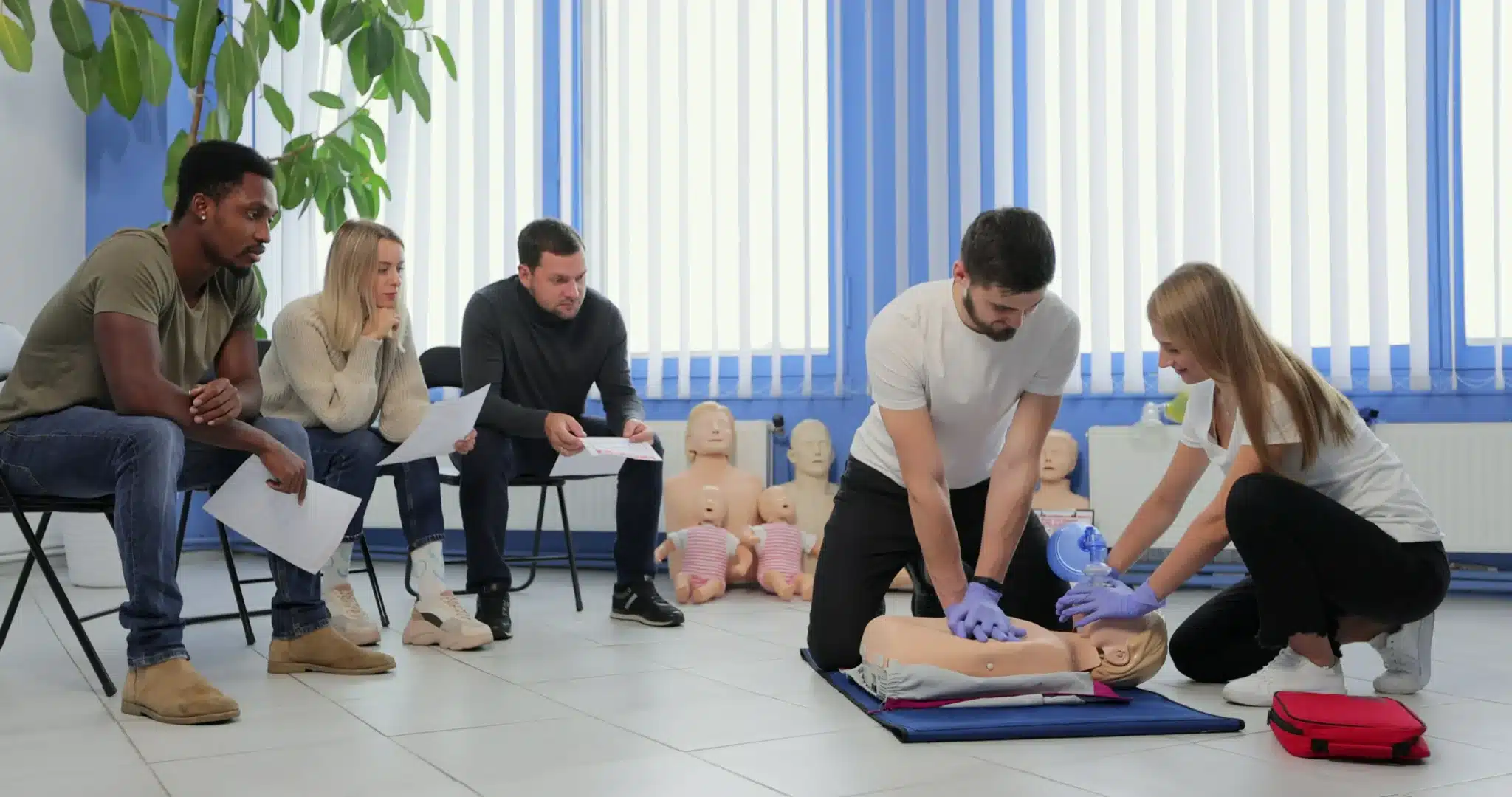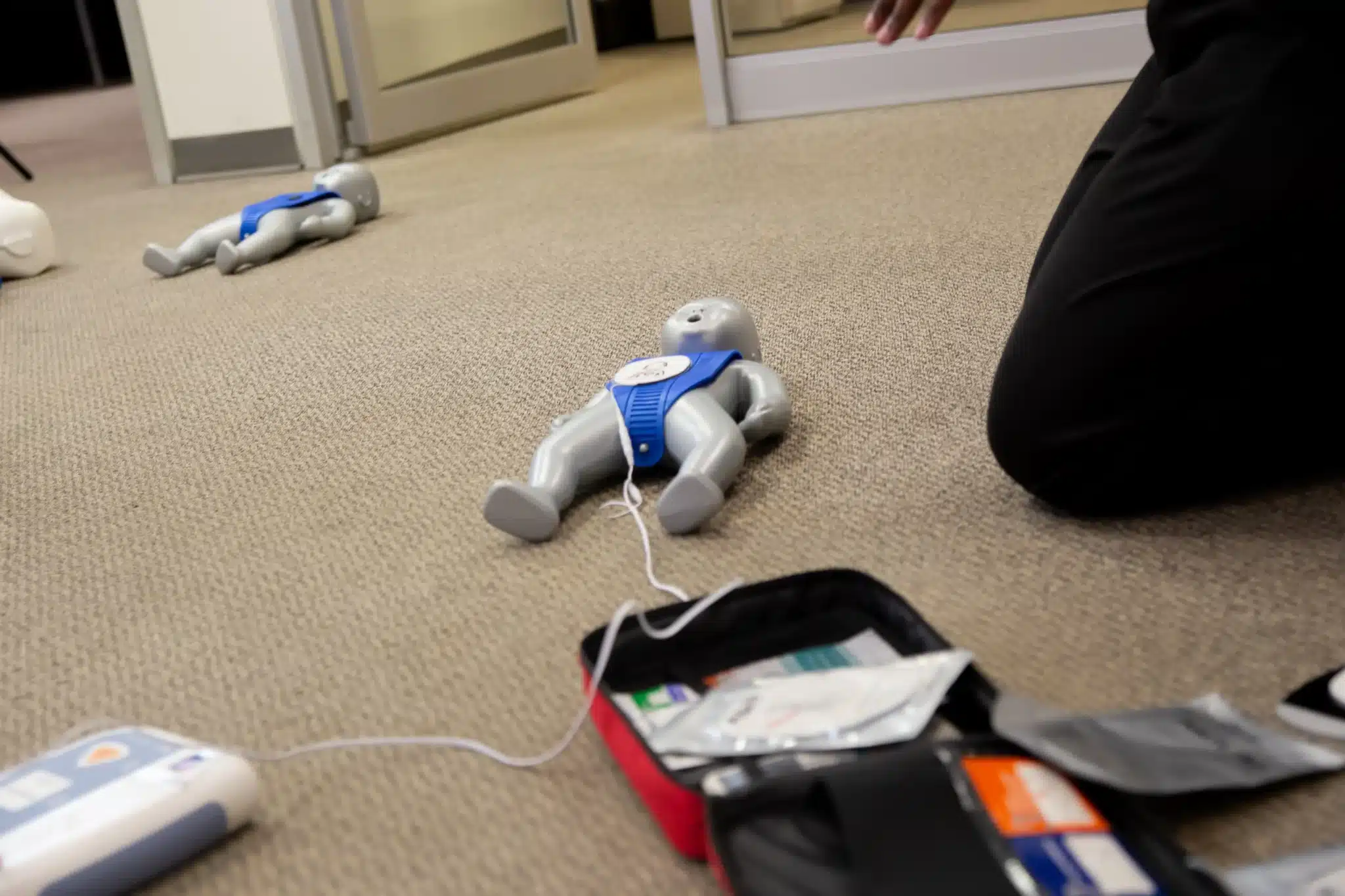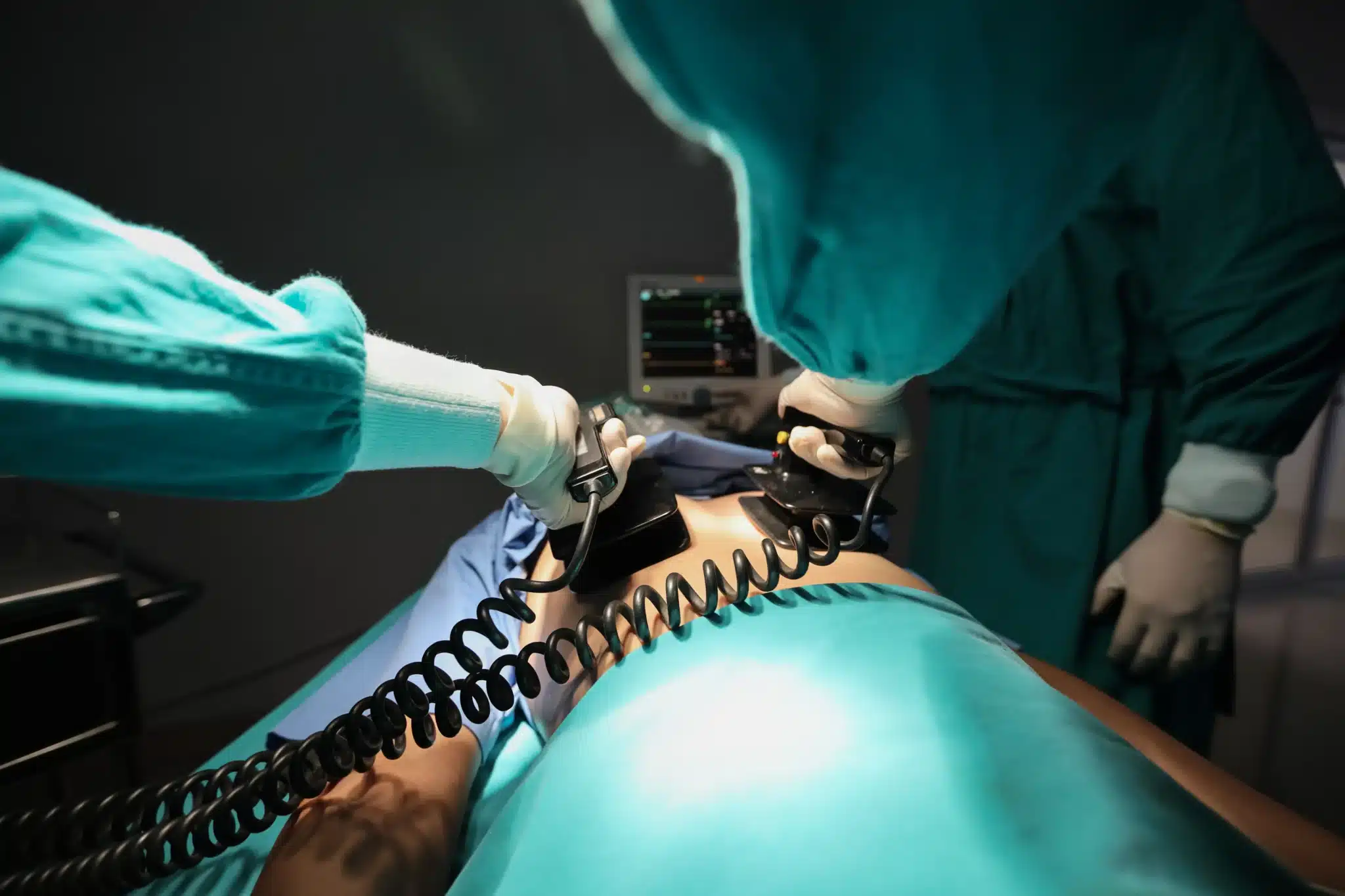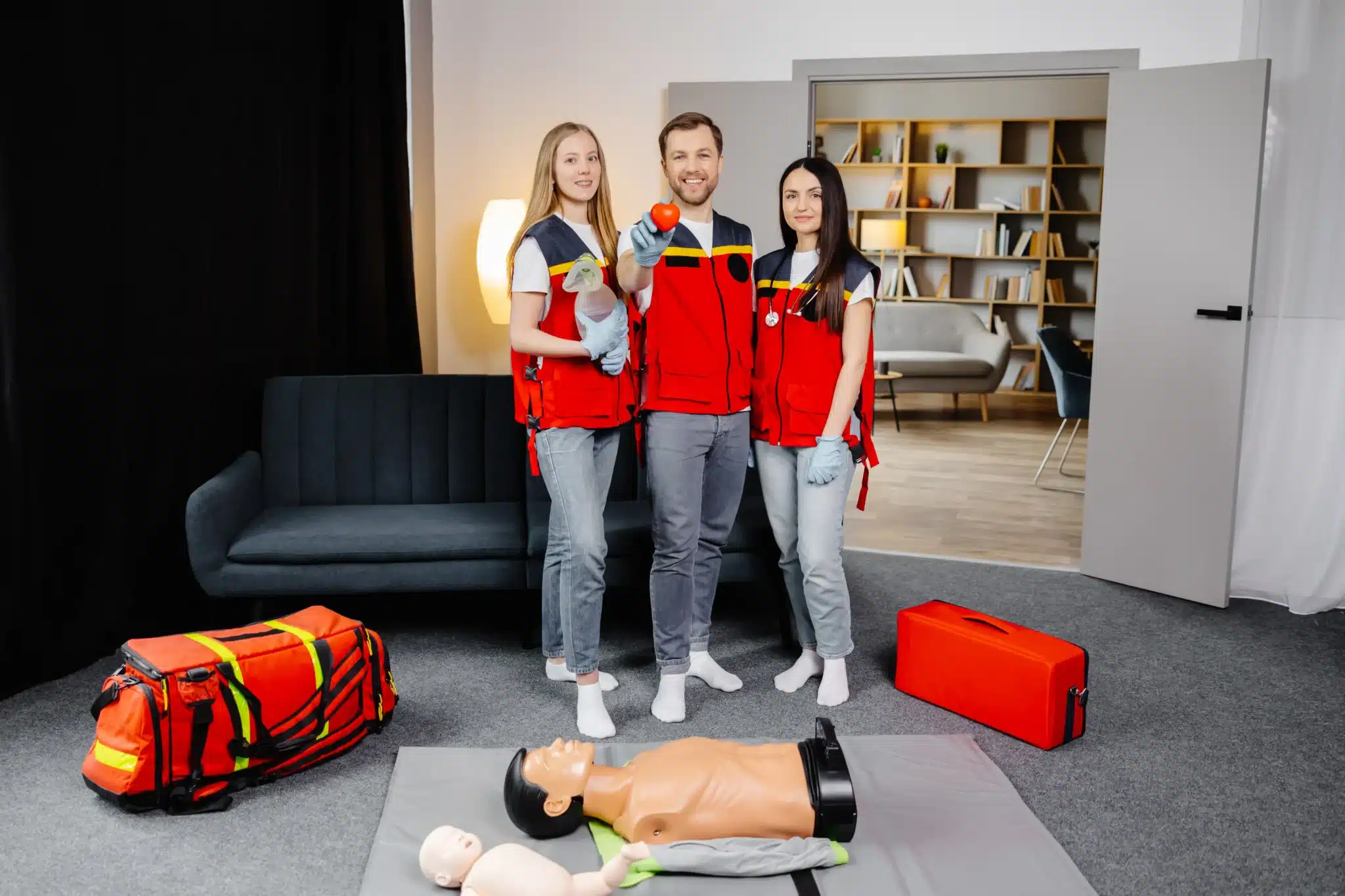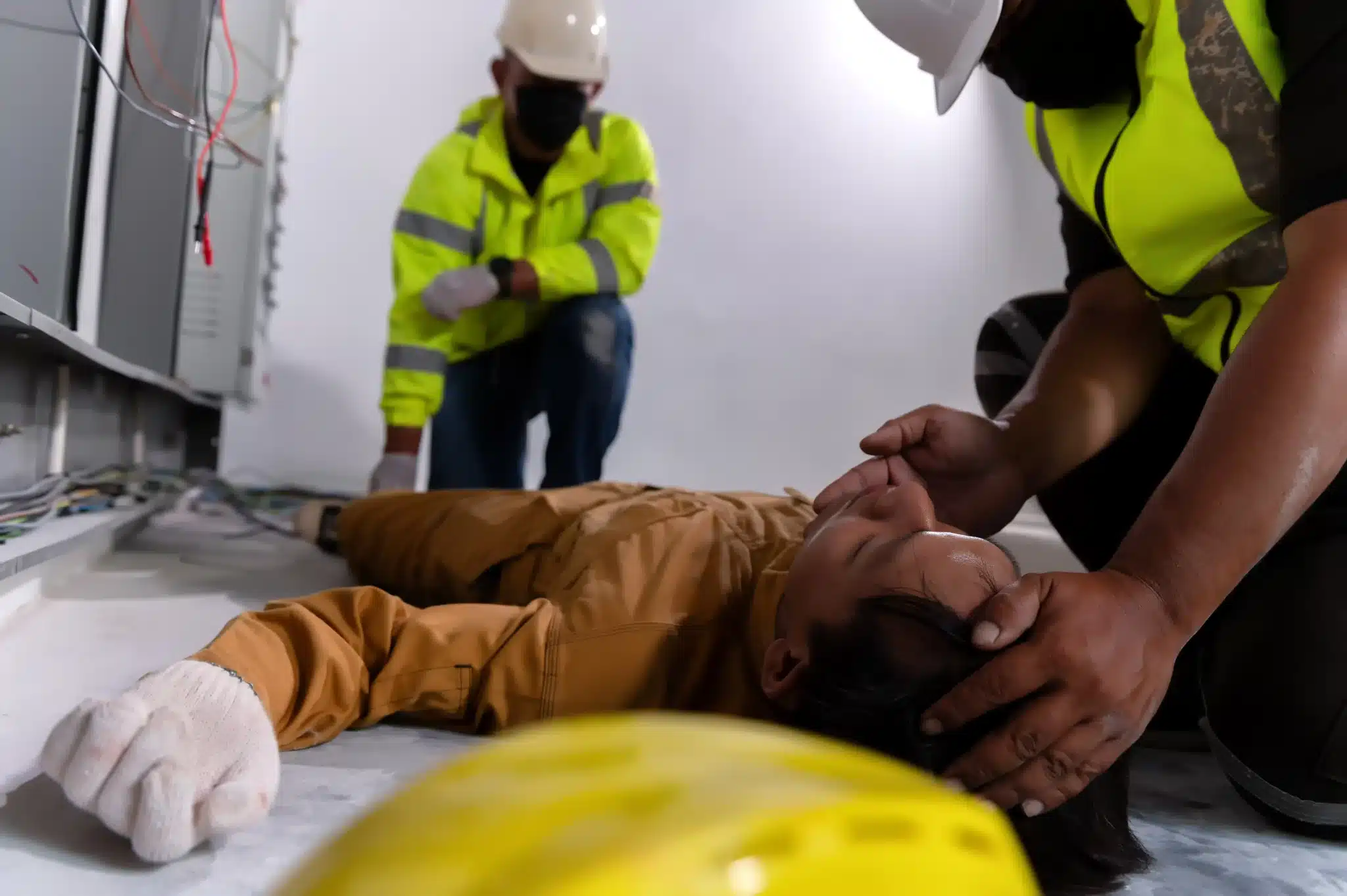Working in healthcare or a related field often means juggling a busy schedule while staying on top of essential certifications. BLS renewal is one of those must-haves, but finding the time and the right course can be tricky. This guide is designed to make the process easier, answering your questions about BLS renewal, from finding convenient “bls renewal near me” options to understanding the costs and benefits of different learning formats. Whether you prefer the flexibility of online learning, the hands-on experience of in-person training, or a combination of both, we’ll help you find the perfect fit. We’ll also cover how to prepare for your renewal, ensuring you’re confident and ready to refresh your life-saving skills.
Key Takeaways
- BLS renewal is crucial for healthcare providers and other professionals. Staying up-to-date on the latest guidelines ensures you can confidently respond to emergencies and maintain your qualifications.
- Find a BLS renewal provider and course format that suits your needs. Consider factors like location, schedule, cost, and whether you prefer online, in-person, or blended learning.
- Prepare for your renewal course by reviewing key concepts and confirming any prerequisites. This will help you get the most out of your training and streamline the recertification process.
What is BLS Renewal & Why Does it Matter?
BLS renewal is how healthcare providers and other professionals refresh their life-saving skills. Think of it like renewing your driver’s license—it confirms you’re up-to-date and qualified. A BLS certification is typically valid for two years. It’s important to renew it before it expires, as there’s no grace period. Letting it lapse means retaking the entire course, not just a refresher.
Why is staying current so important? BLS renewal ensures you’re familiar with the latest guidelines and techniques from organizations like the American Heart Association. Medicine is constantly evolving, and best practices change. Renewal courses cover these updates so you can provide high-quality care in an emergency. Plus, many healthcare jobs require a current BLS certification, so renewing keeps you eligible for employment. Whether you’re a nurse, doctor, or medical student, timely renewal demonstrates your commitment to patient safety and professional development. It also helps you feel confident and prepared to handle any critical situation.
Find the Right BLS Renewal Provider
Finding the right BLS renewal provider depends on your learning style, schedule, and budget. Let’s explore some popular options to help you make the best choice.
Fremont CPR Classes
If you’re in the Fremont, Newark, or San Jose area, Fremont CPR Classes offers a range of American Heart Association (AHA) courses, including BLS renewal. They focus on practical skills like CPR, AED use, and choking relief. As a woman-owned business, they prioritize high-quality instruction and convenient scheduling. For cost savings, check their website for group discounts.
American Heart Association
The AHA BLS CPR class (formerly BLS for Healthcare Providers) is a trusted standard in the medical field. It’s a comprehensive course covering high-quality CPR and AED use in emergencies. You can find AHA-certified training centers across the country, ensuring consistent instruction and recognized certification. Fremont CPR Classes is a certified AHA Training Center offering these courses in over 60 cities.
Red Cross
The Red Cross is another well-known provider of BLS renewal courses. They offer both online and in-person options, providing flexibility for different learning preferences and schedules. Their courses cover essential life-saving techniques and adhere to established guidelines.
Local Hospitals & Medical Centers
Many local hospitals and medical centers offer BLS renewal courses tailored to healthcare professionals. These courses often emphasize hands-on training and may integrate specific hospital protocols. Check with hospitals in your area, or explore our Northern CA CPR directory for potential training sites.
Online Training Platforms
Online BLS renewal courses offer a convenient way to recertify, especially for busy professionals. These courses typically include training videos, interactive modules, and assessments. While online renewal can be flexible, choosing a reputable provider that aligns with AHA guidelines is essential. Fremont CPR Classes can answer your questions and guide you toward a suitable online course.
Compare BLS Renewal Formats
Choosing the right BLS renewal format depends on your learning style, schedule, and budget. Let’s break down the pros and cons of online, in-person, and hybrid options to help you decide what’s best for you.
Online Renewal: Pros & Cons
Online BLS renewal courses offer incredible flexibility. You can study at your own pace, fitting the training around your busy schedule. Many institutions offer online BLS renewal courses, covering essential skills like CPR, choking relief, and AED use. Plus, online renewal is often the most budget-friendly option, with fees ranging from $12 to $50. The American Heart Association also acknowledges the scheduling benefits of online BLS courses. However, online courses may not provide the same level of hands-on practice as in-person training. If you learn best by doing, a fully online course might not be the ideal choice.
In-Person Renewal: Advantages & Disadvantages
In-person BLS renewal provides a structured learning environment with direct interaction with an instructor. In-person BLS courses cover the same core life-saving skills as online courses, including CPR, AED use, and relieving choking, but with the added benefit of hands-on practice and immediate feedback. This format is especially beneficial for those who prefer a traditional classroom setting and thrive on personal instruction. The BLS Renewal Course typically takes about three hours, including skills practice and testing. While in-person training may have higher costs, many providers offer discounts, especially for members and organizations.
Hybrid Options: Benefits
Hybrid BLS renewal courses combine the best of both worlds. You’ll complete the coursework online at your own speed, then attend an in-person skills session to practice and demonstrate your proficiency. Organizations like the Red Cross offer these blended learning options for both CPR and BLS. Hybrid courses provide the flexibility of online learning while ensuring you get the crucial hands-on practice needed to confidently perform life-saving techniques. This format is a great option for those who want a balance of convenience and practical application.
BLS Renewal: Costs & Value
Getting recertified in Basic Life Support (BLS) is an investment in your skills and career. Understanding the costs involved helps you budget effectively and find the best value. Let’s break down typical prices, factors that influence cost, and potential discounts.
Typical Prices
BLS renewal courses typically range from $70 to $120. This price usually covers online coursework, skills testing, and your official provider BLS certification card. For instance, here at Fremont CPR Classes, our BLS course falls within this price range, offering comprehensive training and certification. Remember that prices can vary, so it’s always a good idea to check with your chosen provider for their most up-to-date pricing.
Factors Affecting Cost
Several factors can influence the cost of your BLS renewal. Location plays a role, as prices can differ between cities and training centers. The course format—online, in-person, or blended—also affects the cost. In-person courses sometimes involve additional facility fees. Finally, the training provider itself influences pricing, with different providers setting their own rates. It’s smart to compare options to find a course that fits your budget and learning style. If you’re looking for training in Fremont, Newark, or San Jose, take a look at our CPR directory for Northern California.
Discounts & Promotions
Look for potential discounts to make your BLS renewal even more affordable. Many providers, including Fremont CPR Classes, offer discounts for group bookings, which is a great option if you’re renewing with colleagues or friends. Some providers also offer discounts for returning students or members of professional organizations. Don’t hesitate to contact us to learn about any current promotions or special offers. Often, the cost of study materials is included in the course fee, so you won’t have unexpected extra expenses. Getting certified or recertified shouldn’t break the bank, and with a little research, you can find a high-quality BLS renewal course at a price that works for you.
Enroll in a BLS Renewal Course
Now that you understand the importance of BLS renewal and have explored different providers and course formats, let’s walk through the enrollment process. These steps will help you get recertified efficiently.
Check Your Eligibility
Before you start searching for a BLS renewal course, confirm your current certification status. BLS renewal courses are designed for those whose certifications are current or have expired within the past 30 days. If your certification has been expired for longer than that, you’ll likely need to take the full BLS provider course again. Check with your certifying organization, such as the American Heart Association, or the Red Cross, for specific guidelines.
Select a Course & Provider
Once you’ve confirmed your eligibility, choose a course and provider that meet your needs. While many institutions offer BLS renewal training, ensure they’re accredited by a recognized organization like the American Heart Association. Consider factors like location, schedule, and cost when making your decision. Fremont CPR Classes offers various options to accommodate busy schedules and different learning preferences. We also offer group discounts for businesses and organizations.
Register for the Course
After selecting a course and provider, you can begin registration. This typically involves creating an account with the training provider, completing a registration form, and submitting payment. You can often find helpful resources and refreshers online, or check if your chosen provider offers pre-course materials. Contact us to learn more about our upcoming courses and any available resources.
Course Duration & Requirements
BLS renewal courses are generally shorter than the initial certification course. A typical BLS renewal course takes approximately 2.5 to 3 hours to complete, including skills practice and testing. This shorter timeframe makes it easier to fit the training into your busy schedule. Be sure to review the specific course requirements and any prerequisites before registering. You can also explore our Northern California CPR directory for additional training options in your area.
Prepare for Your BLS Renewal
Getting ready for your BLS renewal doesn’t have to be stressful. With a little preparation, you can walk into your renewal course feeling confident and ready to refresh your life-saving skills. This section covers everything you need to know beforehand.
Required Materials & Prerequisites
Before signing up for a BLS renewal course, double-check that you meet the requirements. Most certified training providers, like Fremont CPR Classes, require a current BLS certification or one that recently expired. If your certification lapsed a while ago, you might need to take the full BLS provider course instead. It’s always a good idea to confirm this with your chosen provider to avoid any surprises. You won’t typically need physical materials beforehand, as updated manuals and resources are usually provided as part of the renewal course.
Tips for Success
A smooth BLS renewal experience starts with choosing the right course. Think about your learning style and schedule. Do you prefer online learning or the hands-on experience of an in-person class? Either way, make sure the course is accredited by the American Heart Association. Once you’ve enrolled, refresh your knowledge. Review your existing BLS materials, especially the core concepts and techniques. Practicing CPR and AED skills can make a real difference in your comfort level during the course. And, to stay completely up-to-date, familiarize yourself with the latest AHA guidelines before your class. These simple steps will help you ace your renewal and maintain your BLS certification.
Maintain Your BLS Certification
Keeping your BLS certification current is essential for healthcare professionals and anyone else who needs to respond to medical emergencies. It confirms your ability to provide effective, high-quality care when it matters most. Here’s how to stay on top of your BLS renewal:
Renew on Time
BLS certification is generally valid for two years. Don’t let it expire! In most cases, you can renew up to 30 days after the expiration date. Some organizations, like the American Heart Association, offer a grace period, allowing renewal up to 60 days after expiration. Always check with your certifying organization for specific guidelines. It’s best to renew before your certification expires to avoid any gaps in your credentials. BLS renewal courses are designed for those with current or recently expired certifications, extending your qualification for another two years.
Continuing Education Options
Even if your certification isn’t up for renewal yet, staying sharp and expanding your skills is always a good idea. The Red Cross often uses a blended learning approach, combining online coursework with in-person skills sessions. This format offers flexibility for busy schedules. Many organizations provide convenient online BLS renewal courses covering essential skills like CPR, choking relief, and using an AED. These are a great way to refresh your knowledge and maintain your preparedness. Plus, the BLS certification process is often designed with multiple-choice questions, making learning and renewal straightforward. Staying current with your BLS skills benefits both your career and the people you care for.
Related Articles
- BLS Renewal in Newark: Your Complete Guide – Fremont CPR Classes
- BLS Renewal San Jose: Your Complete Guide – Fremont CPR Classes
- BLS Renewal in Fremont: Your Complete Guide – Fremont CPR Classes
- BLS Certification in San Jose: The Complete Guide – Fremont CPR Classes
Frequently Asked Questions
How long is a BLS certification valid? BLS certifications are typically valid for two years. It’s crucial to renew before the expiration date to avoid having to retake the full course.
What if my BLS certification has already expired? If your certification is very recently expired (within 30 days), you’re usually still eligible for a renewal course. However, if it’s been expired for longer, you’ll likely need to take the full BLS provider course again. Check with your certifying organization or the training provider for their specific policy.
What’s the difference between online, in-person, and hybrid BLS renewal courses? Online courses offer flexibility, allowing you to learn at your own pace, while in-person courses provide a structured environment with hands-on practice and instructor feedback. Hybrid courses combine online learning with an in-person skills session. The best format depends on your learning style and schedule.
How much does BLS renewal cost? BLS renewal costs typically range from $70 to $120, depending on the provider, location, and course format. Look for potential discounts, such as group rates or offers for returning students.
How can I find a BLS renewal course near me? You can find BLS renewal courses through various avenues, including the American Heart Association, the Red Cross, local hospitals, and online training platforms. If you’re in Northern California, check out Fremont CPR Classes or our Northern CA CPR directory for local options.
